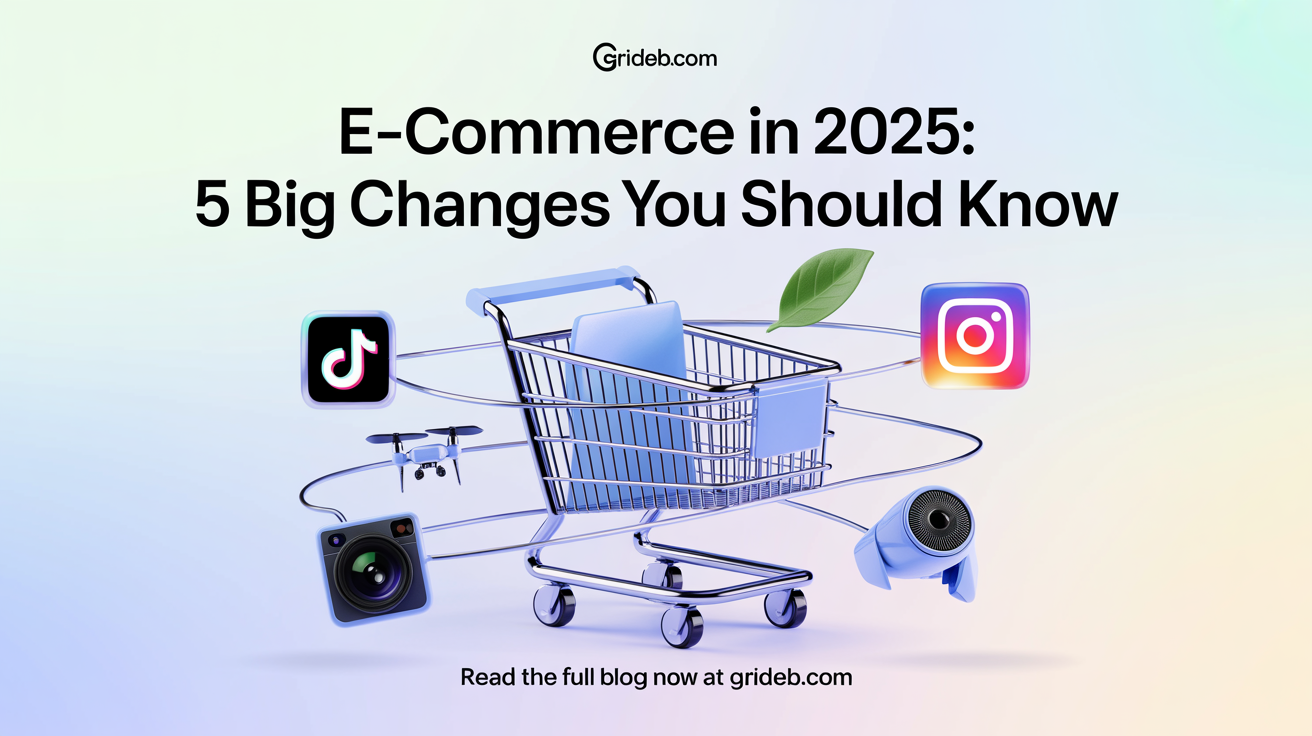E-Commerce in 2025: 5 Big Changes You Should Know
By P | Publish Date: 8/2/2025 2:29:00 PM | Update Date:

The e-commerce world is moving faster than ever. What worked five years ago might not work today. As we approach 2025, new technologies and changing customer expectations are transforming how people shop online. Business owners and marketers need to understand these changes to stay ahead of the competition. In this blog, we'll explore the 5 biggest changes in e-commerce for 2025. These trends will shape the future of online shopping and provide opportunities for brands that are ready to adapt. Whether you own a small online shop or manage a large e-commerce business, these insights will help you plan for success. In 2025, shoppers will expect online stores to "know" them. They want product suggestions, discounts, and content that match their personal tastes. Generic marketing is no longer effective. AI (Artificial Intelligence) will make it possible for businesses to offer highly personalized shopping experiences at scale. For example, if a customer buys running shoes, AI systems will suggest related products like athletic socks or fitness trackers. It will also adjust the homepage, emails, and ads to match the shopper's interests. Amazon is a leader in AI-powered personalization. Every time you visit, it shows you products based on your past searches and purchases. Social media platforms like Instagram, TikTok, Facebook, and YouTube are becoming shopping platforms. In 2025, users won’t need to leave their favorite apps to buy products. They can watch a video, see a product, and purchase it immediately within the app. Influencers and user-generated content (UGC) play a huge role in driving social commerce. People trust recommendations from real users more than traditional ads. Fashion brand Zara uses TikTok challenges and Instagram reels to showcase new collections, allowing users to shop directly from the posts. Consumers in 2025 will be more environmentally conscious. They prefer brands that care about the planet and make efforts to reduce their carbon footprint. This includes eco-friendly packaging, sustainable materials, ethical sourcing, and transparent business practices. Greenwashing (pretending to be eco-friendly) won’t work. Shoppers want real proof. Patagonia is known for its commitment to sustainability, offering repair programs and encouraging customers to buy used products. Typing in search bars is being replaced by speaking and snapping photos. With the rise of smart speakers like Amazon Alexa and Google Home, more people will search for products using their voice. Visual search technology allows shoppers to take a photo of an item they like and find similar products online. Apps like Google Lens are making this possible. Home decor brands like Wayfair allow users to upload a photo and find similar furniture items. Customers will expect super-fast delivery, sometimes within hours. Real-time tracking and flexible delivery options (like pickup lockers) will be standard. A smooth and hassle-free return process will also be crucial. To meet these demands, businesses must invest in smart logistics, automate their warehouses, and partner with efficient delivery services. Amazon Prime Now offers delivery in as little as 2 hours in many cities, setting the bar for delivery speed. E-commerce in 2025 will be faster, smarter, and more customer-focused than ever. Personalization, social shopping, sustainability, new ways of searching, and rapid delivery are not just trends — they are becoming essential. Businesses that adapt to these changes will build stronger connections with their customers, increase their sales, and stay ahead of competitors. Now is the time to invest in the right tools, strategies, and partnerships to future-proof your online store. Stay curious, stay flexible, and always keep the customer at the heart of your e-commerce strategy. Want more tips and insights to grow your online store? Subscribe to our newsletter and get the latest e-commerce strategies straight to your inbox!Introduction
1. AI-Powered Personalization: Making Shopping Feel Personal
What's Changing?
Why It Matters:
How You Can Prepare:
Real-Life Example:
2. Social Commerce: Turning Social Media Into Online Stores
What's Changing?
Why It Matters:
How You Can Prepare:
Real-Life Example:
3. Sustainability: Eco-Friendly Shopping Will Be Expected
What's Changing?
Why It Matters:
How You Can Prepare:
Real-Life Example:
4. Voice and Visual Search: Changing How People Discover Products
What's Changing?
Why It Matters:
How You Can Prepare:
Real-Life Example:
5. Faster Delivery & Smarter Logistics: Instant Gratification is the Norm
What's Changing?
Why It Matters:
How You Can Prepare:
Real-Life Example:
Conclusion
Call to Action


